National Parks in Missouri
The “Show Me” State has a lot to show in the way of National Park sites. Missouri holds one world-famous National Park, four remarkable historic sites, and the strongest representation of National Historic Trails in the country. Missouri also boasts one of the best National Scenic Riverways in the world. Quite a collection for one state!
Table of Contents
Better still, these public lands parks are spread throughout the State of Missouri. So you don’t have to look far to find a National Park Site in Missouri.

Our Top 5 National Parks in Missouri
We made lots of time for Missouri on our epic road trip. Here’s our list of top five national parks in Missouri.
(We visited the Gateway Arch as part of our epic family road trip from Oregon to Georgia and back in the summer of 2021. To follow our trip from the beginning, visit our Ready, Set…Reset! post)
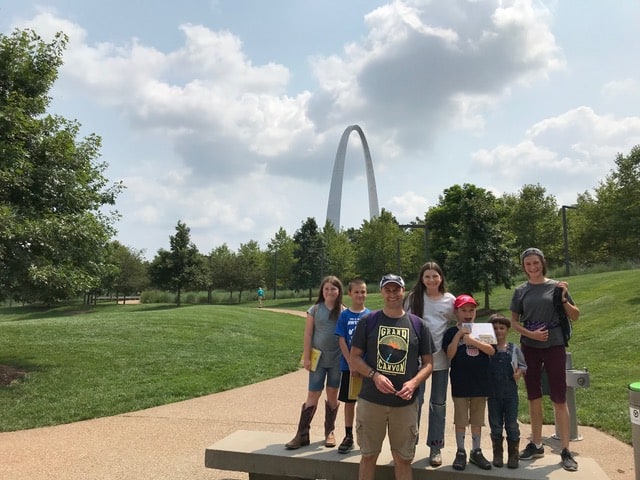
Spoiler alert: a history buff composed this list, so the choices are a bit slanted.😊
Please note that hours and availability are subject to change. Check NPS websites for current hours and COVID-19 guidelines.
#1 Gateway Arch National Park
We love this park. In fact, we decided to return here despite having visited previously in 2009.

That said, I have to confess that the Park hadn’t been on my bucket list on our first trip through St. Louis. In fact, I’d mostly gone for the sake of our kids. It’s just a big monument in a park right?
@dinkumtribe Gateway Arch National Park in St. Louis, Missouri. #nationalparks #stlouismo #gatewayarch #juniorranger #fyp #nps ♬ Swear By It – Chris Alan Lee
Think again! There’s more than you think at this place. For one the Jefferson National Expansion Memorial is breathtaking. Like so many places, pictures don’t touch it. You’ve got to go to know.

Jefferson National Expansion Memorial
The Arch dwarfs downtown St. Louis. The 630-foot structure is the tallest monument in the United States, over twice the height of the Statue of Liberty. More than that, its modern style gives it a different feel than Mt. Rushmore or the Memorials of the Capital Mall in Washington DC.
The 91-acre park was expertly planned. The Arch’s location at the center of the park affords views from all sides. You can walk freely underneath and around the Arch’s two bases.
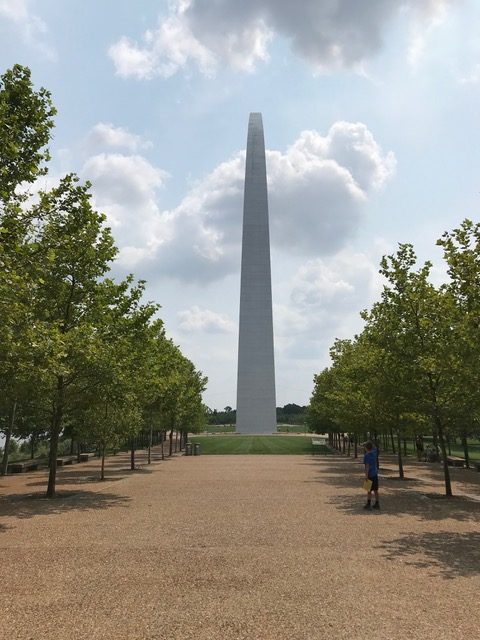
A walking trail meanders through grassy glades, groves of trees, and small ponds. The natural beauty recalls the fact that St. Louis was once wilderness. Colorful markers highlight aspects of St. Louis’ central role is the story of the Louisiana Purchase and Westward Expansion. But this is just the bare minimum of what Gateway Arch National Park offers.
The fact is that you have to go beneath the surface to find the true riches. I’m not joking, the museum is underground! More than that, it’s a museum with a capital M.
Interpretive Center

For one, the museum is beautifully designed. It was clear that the museum had undergone a total makeover from what it had been in 2009. An attractive, open layout provides plenty of space to move around and explore. This was a big blessing after being cooped up in the car for hours.
You can tell that the designers built this place to be experienced. Vibrant displays, full-size replicas, intriguing models, hands-on artifacts, and interactive touchscreen stations fill every corner.

Here’s a pro tip: Ignore the museum displays at first. That’s right, resist the temptation and find the Junior Ranger station.
We’ve found that a Park’s Junior Ranger booklet provides the structure our kids need to make the most out of a Park museum. So we went there first and then dug into the displays.
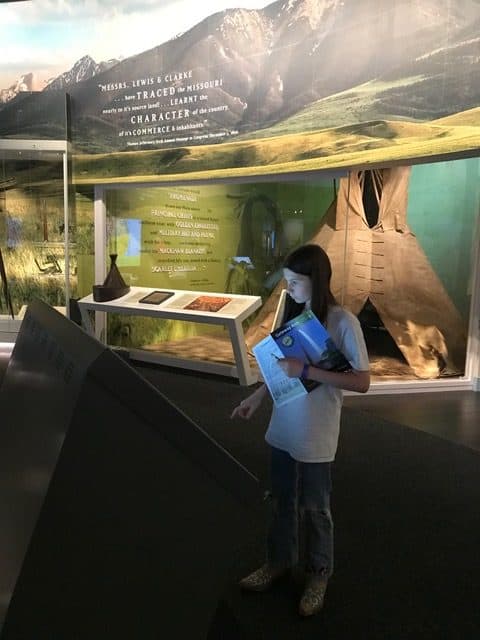
The Gateway Arch Jr. Ranger booklet guided our children through the museum, giving them a chronological tour through the history of the American West.
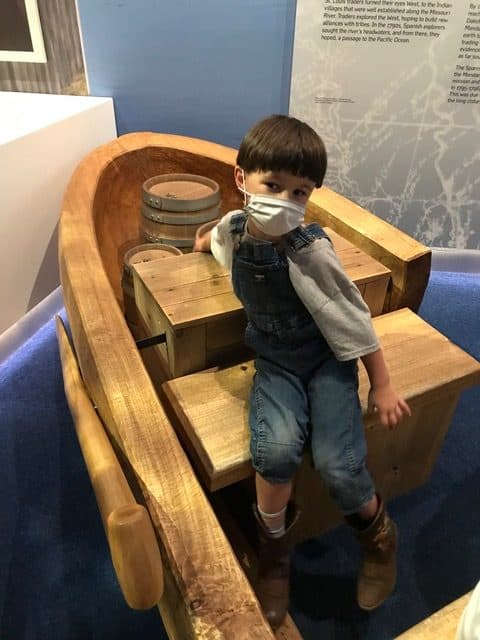
Finally, Jennifer and I were impressed at how well the museum handled the hairy subject of Westward Expansion. The museum presented this complex aspect of American History in a balanced way that didn’t skirt or sugarcoat the hard stuff. The voices and perspectives of the various peoples of the American West were well represented throughout the museum.
Don’t skip the museum. The museum is a gateway to getting the most out of this Park. (Yeah, I know. I couldn’t resist the dad joke!)
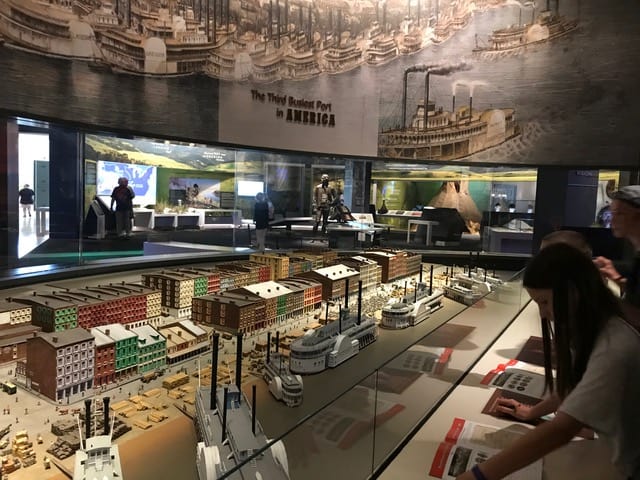
But really, starting with the interpretive center is the best way to enjoy all of the recreational opportunities that the park offers. For example, you’ll see the Arch differently when you understand what it took to make it a reality.
Tram and Observation Deck

Probably the best known of the park’s activities is the Arch tram. That’s right, you can take a tram up to the top the Gateway Arch!
Tram is sort of a misnomer, as the actual transport is more like a tame rollercoaster. The smallish train loudly climbs its way up the arch to deliver you to the observation deck located inside the top of the 630-foot tall Gateway Arch.

Windows and displays provide great views of St. Louis, the Mississippi River, and the Illinois countryside on the other side of the river. The observation deck is on the small side, not unlike a commercial airplane.

If you tend to get claustrophobic you may want to try out the full-size observation deck model that’s located not far from the tram entry. It can give you a good sense of what to expect up at the top.
You won’t need more than about fifteen minutes to take in the views before letting the tram return you to terra firma. Altogether, it’s a worthwhile experience that you won’t forget!
Historical Landmarks

Four important historical landmarks surround the Gateway Arch. All are well worth your time.
The Basilica of St. Louis, King of France stands to the west of the Arch. The historic cathedral is testament to St. Louis’ French heritage and has played a central role throughout the city’s history. Reserve a tour on their website or download the visitor’s guide to take a self-guided tour of the cathedral and its grounds.

The Old Courthouse stands in front of the Arch. This was the place where Dred Scott first sued for his freedom from slavery.

The Supreme Court’s refusal to grant Scott his freedom moved the United States even closer to the Civil War. The Old Courthouse not only provides tours and exhibits, but has even held historical reenactments of court-ordered slave auctions.

Lacleade’s Landing is located just north of the Arch and its park. This historic riverfront area is filled with 19th century waterfront buildings. It’s what remains of the historic waterfront where the Arch now stands. Lacleade’s Landing endures as a meeting place, now offering restaurants, shops, paid parking, and a transit station.

East of the Arch lies the Mississippi River and the waterfront landing area. A beautiful bronze statue reminds visitors that the westward exploration of the Lewis & Clark Expedition started in earnest here in St. Louis.
I was delighted by the riverfront’s brickwork— all that’s left of what was once one of the busiest river ports in the West. I would have totally overlooked this feature had it not been for what I had learned in the Arch interpretative center.
Steamboat Tour
My favorite part of our visit actually took place outside of the park grounds. Back in Kansas City we realized that we’d missed our opportunity to book tickets for a tram ride to the observation deck. We looked over our options on the park website and thought that a river cruise might be a good substitute.
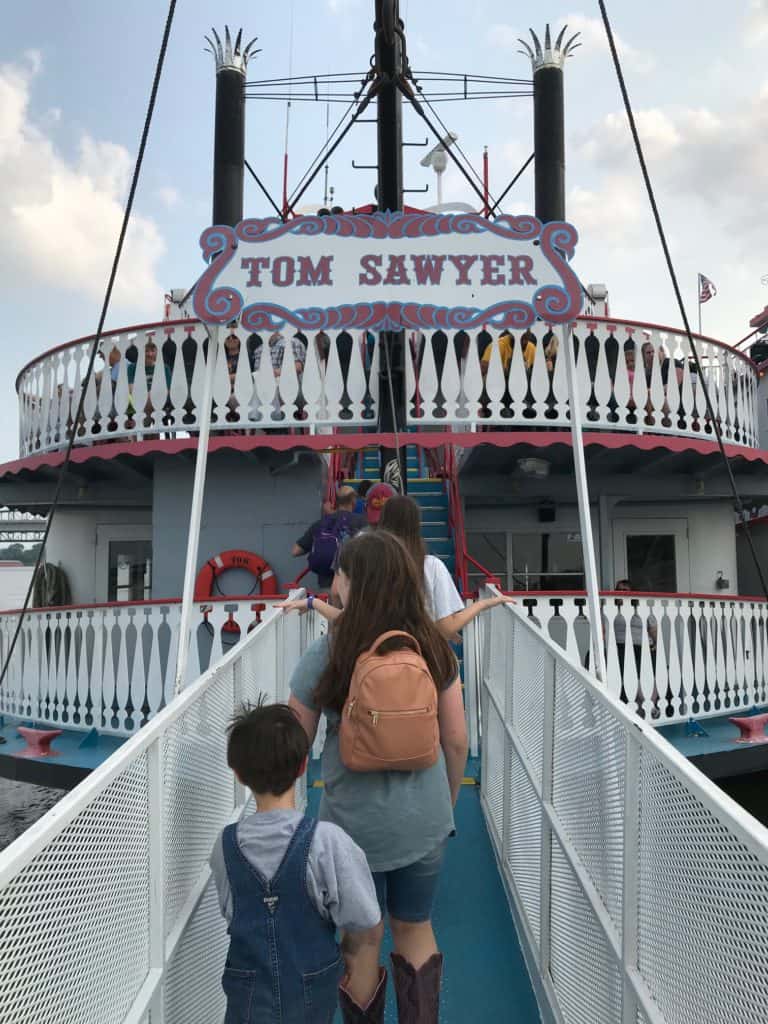
Frankly, I think the river cruise was the better choice, and I’m not alone. A number of our children still talk about how much they enjoyed it. There’s something about being out on the Mississippi in the open air, looking over St. Louis and the surrounding area.
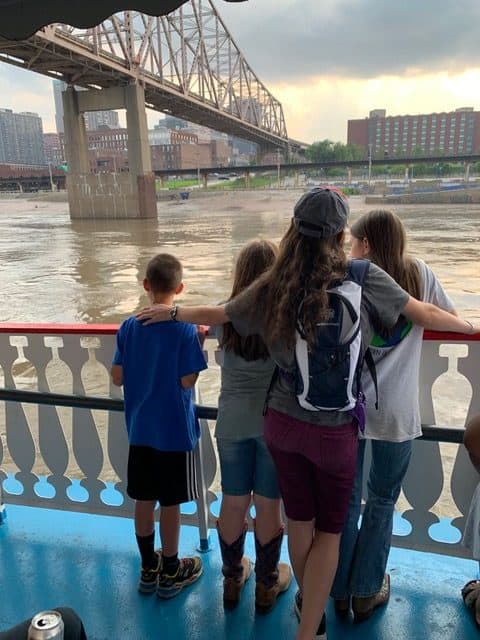
The steamboat was a delight. The children explored every allowable inch of it. They loved looking over the river and listening to the history being told by the boat’s river guide.
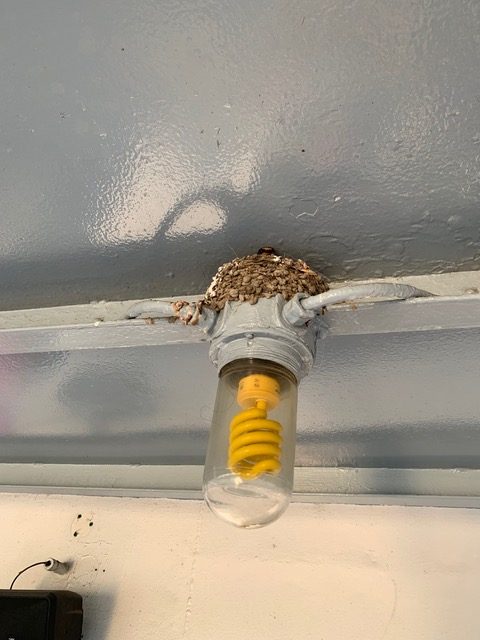
We could sit with our refreshments, watch the bargemen at work, and enjoy the swallows nesting in the nearby boat sconce.
Altogether, the experience was about an hour long and featured not only the National Park but the stretch of river front both north and south of the park. The Steamboat Tour was well worth the time and the price.
Helicopter Tour
Want to take your experience airborne? Gateway Helicopter Tours offers four different tours of the Gateway Arch and the St. Louis region.
I’ve enjoyed incredible helicopter tours over the Grand Canyon and the Hawaiian Islands. I don’t doubt that this would be a memorable way to experience the city of St. Louis.
Know Before You Go:
Gateway Arch National Park easily takes first place for our list of national parks in Missouri. Now, what do you need to know to make your visit a great one?
- Give yourself enough time: A full day would be ideal, especially if you have little ones in tow. There’s enough here to easily give you a day of fun before heading to dinner and getting ready for bed.
- Make reservations: Gateway Arch National Park is a well known National Park located in a major city and a major interstate. Plan ahead and book tickets in advance.

- Plan your commute: Gateway Arch National Park doesn’t have parking facilities. You will need to park in designated parking lots in the surrounding area. We’ve appreciated a parking lot in Lacleade’s Landing, but this map shows additional options.
- Pack for your day: The Arch’s picturesque location puts it at a distance from the rest of downtown. That means that you either need to pack it in or hope that they sell it in the souvenir shop. (Psst! Don’t go with option two, as I’ve never seen diapers sold at a NPS shop).
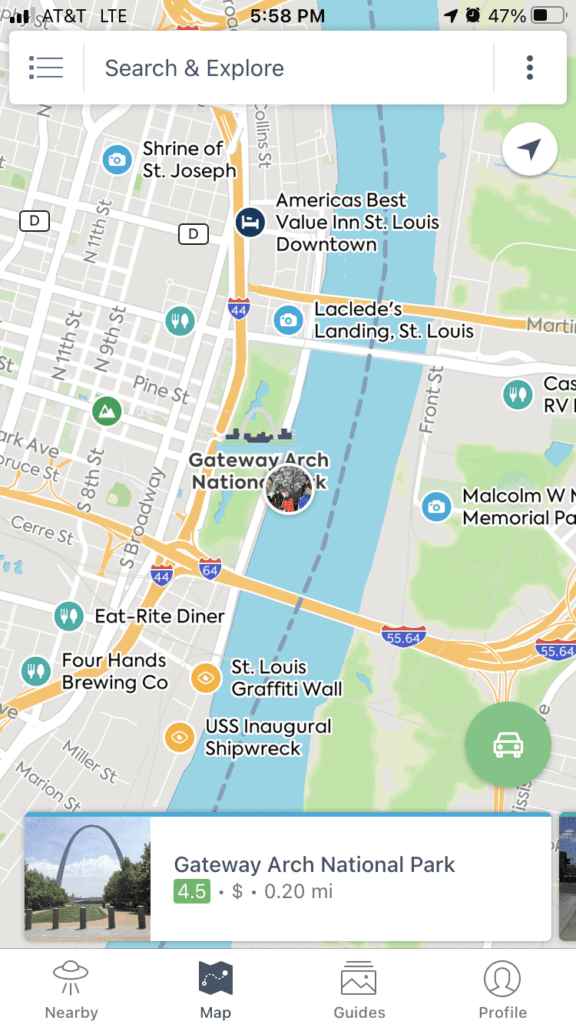
- Going East? Here’s my favorite tip. If you’re headed East, then you’re at the right National Park. Enjoy the Park and then cross the river and stay overnight in Illinois. That way you can jump-start the next day’s drive without St. Louis traffic!
(If you’re following along on our epic road trip, the next stop after the Gateway Arch was our visit to the National Quilt Museum in Paducah, Kentucky.)
#2 Harry S. Truman National Historic Site
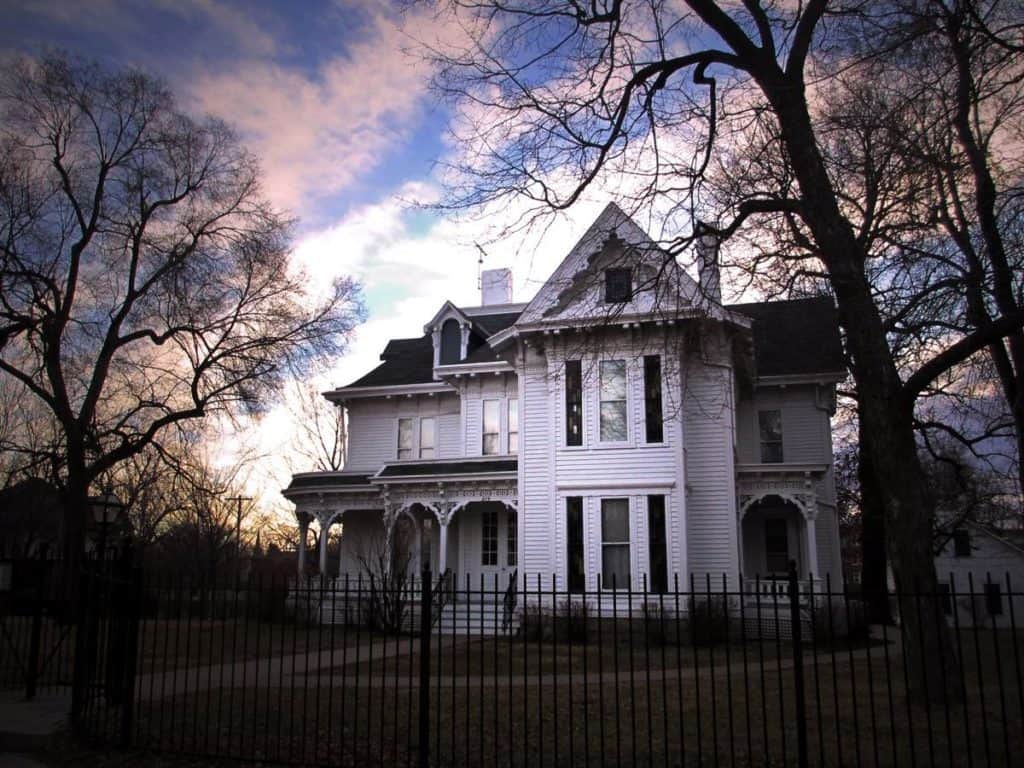
Presidential Libraries are typically spelled b-o-r-i-n-g. But the more I look into this place the more impressed I am. Harry S. Truman National Historic Site earns second place on our list on account of how much it has to offer in locations and options.
Harry S. Truman NHS is located just east of Kansas City. The park’s two units offer a nearly comprehensive view of Truman’s childhood, young adulthood, political career, and post-presidential years.
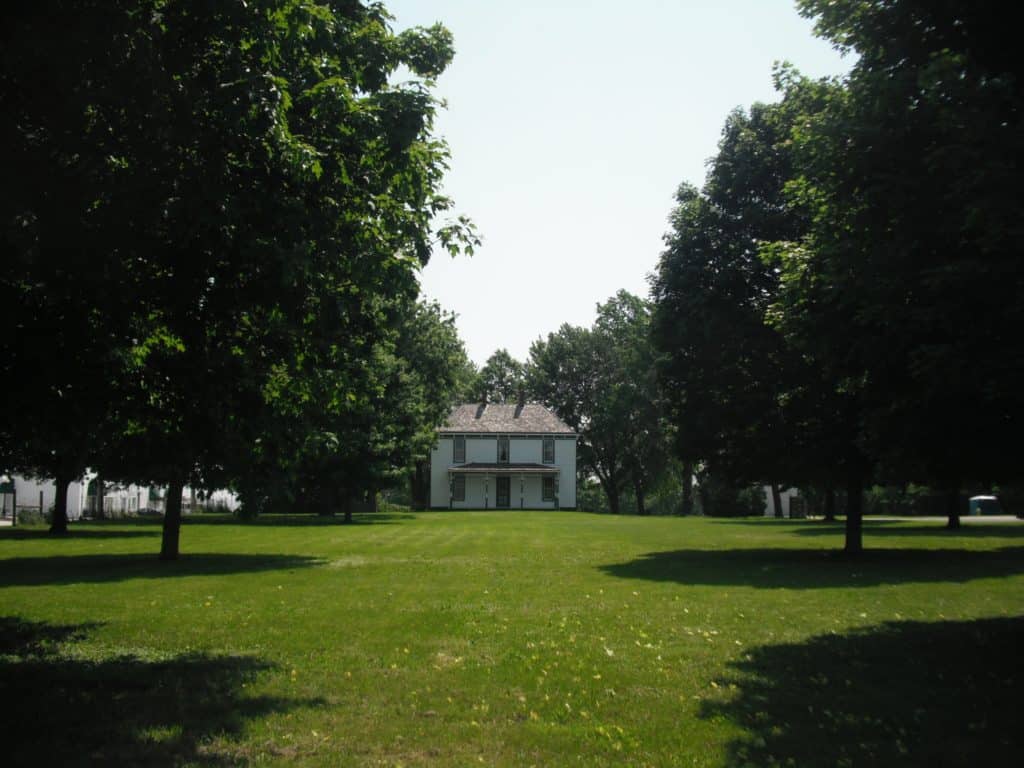
Independence Unit: Truman’s Home Town
The Independence unit (aka Harry S Truman Historic Landmark District) is the main unit and offers the biggest bang for your buck. The district includes several historic blocks of Independence as well as the Truman Presidential Library and Museum.
The scope and breadth of this unit is uncanny. Even the Visitor Center is located in the 1928 Independence Fire Station, a building Truman would have known and recognized. To walk through Truman’s hometown is to step into history and follow his personal and professional journey.
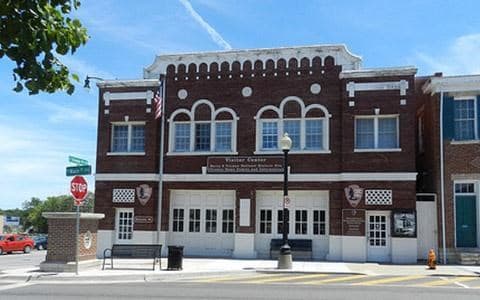
Cell phone tours offer informed guidance through what would otherwise be a maze of information. One tour guides you through Truman’s personal life, pointing out homes of family friends, sites significant to Harry and his wife Bess, and the famous Summer White House.
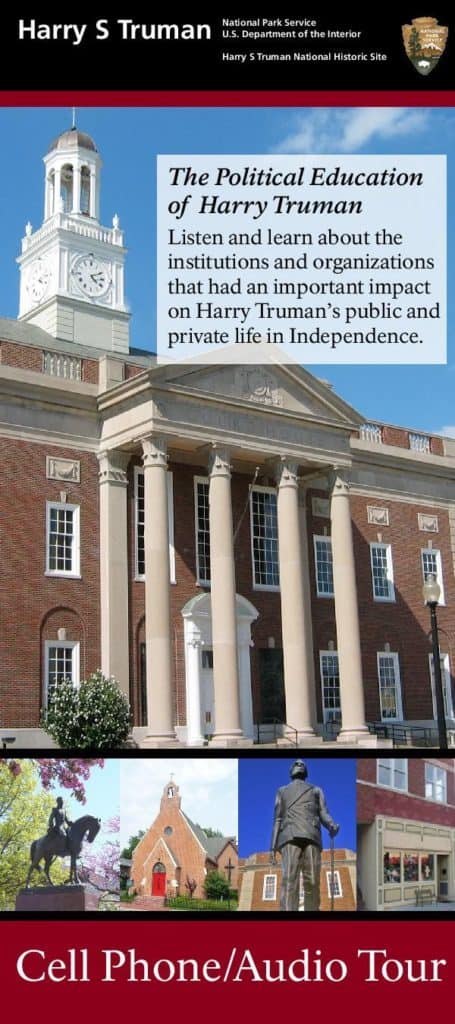
A second cell phone tour leads you through Truman’s start into politics. The tour walks you through several public and private locations that played a role in the future president’s start into a political career.
Grandview Unit: The Truman Family Farm
The second unit of Truman NHS is a little more than a twenty minute drive southwest of the Independence unit. The Truman family farm was owned by Truman’s parents and was the setting of much of his young adult years. A cell phone tour is available to guide you through the home and the various parts of the farm.
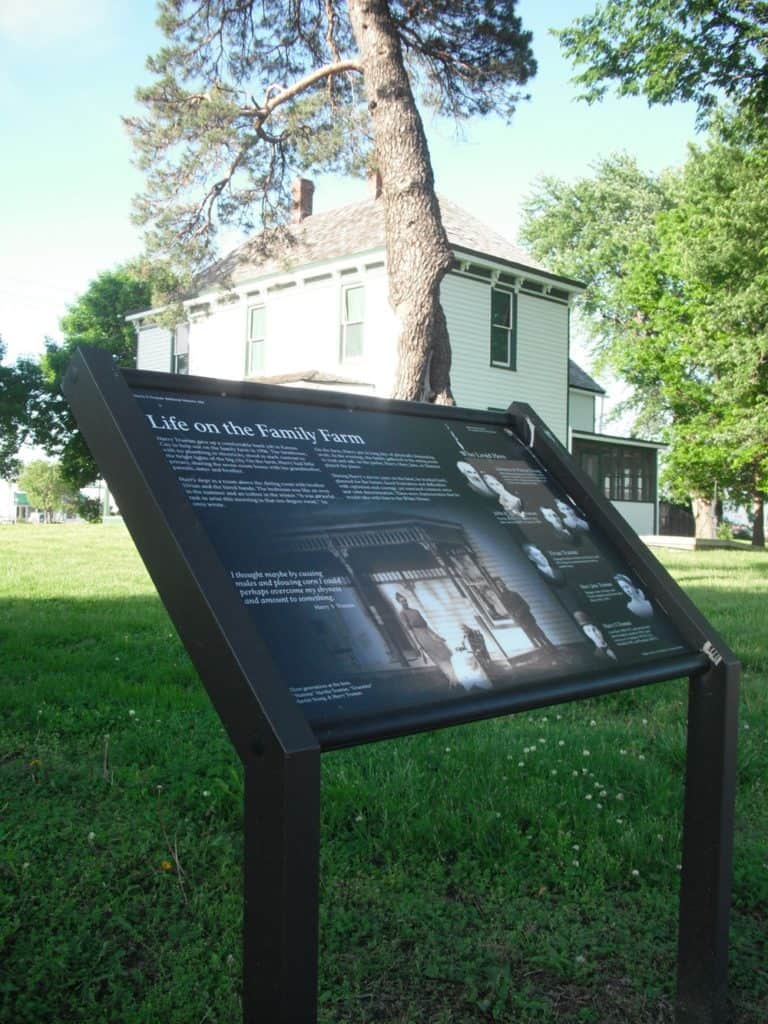
3 You Must See:
All of these sites can be overwhelming, so what should you be sure to see at Harry S. Truman NHS? Here are the big three:
Must-See 1: The Noland Home

The Noland Home is the site of the Truman love story. Truman had known Bess Wallace for years, but it was here in 1910 that their life together began to take shape. The home’s exhibits offer a personal glimpse into the man and woman who would eventually be President and First Lady.
Must-See 2: The Summer White House
Truman hoped to be remembered as the people’s president. He put feet to his words by making time to stay in his hometown even during the years of his presidency.

Many presidents enjoyed a summer white house, but Truman chose to have his summer white house in his hometown among the people that knew him from childhood. The President’s choice to stay in his personal home was iconically American and a powerful example of public service.

Today you can tour the Truman home as well as see the home where the secret service stayed during his residence in Independence, Missouri.
Must-See 3: Truman Presidential Library & Museum
The Truman Presidential Library is located to the far north of the Independence Unit of Harry S. Truman NHS. That said, it has several items that make it worth the drive.
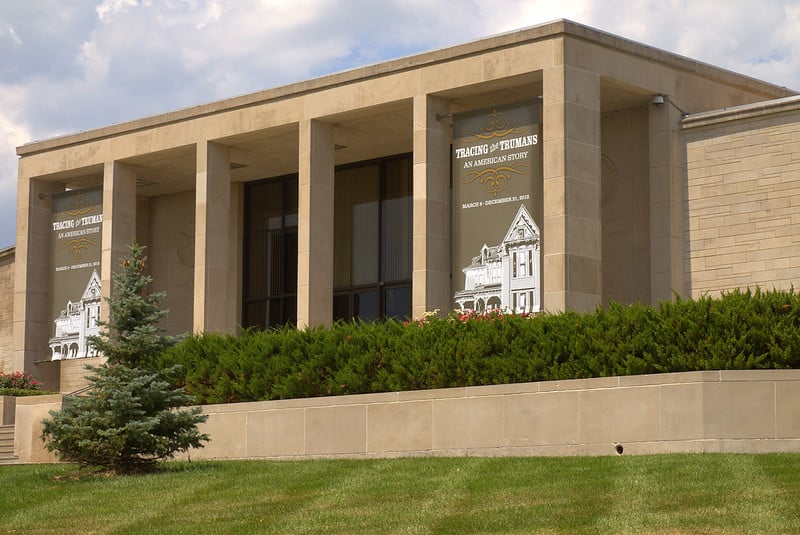
The Museum’s feature exhibit, An Ordinary Man, His Extraordinary Journey provides a great summary of Truman’s lifetime and explains the significance of his presidency. The museum also offers changing exhibits featuring the President and the times in which he lived.
The Truman Presidential Library and Museum is also known for its full-size reproduction of the Oval Office. A big attraction for anyone who digs WWII and the Cold War Era.
Finally, the museum boasts an amazing work by Thomas Hart Benton, the celebrated Missouri muralist who was a prominent American artist during Truman’s lifetime.
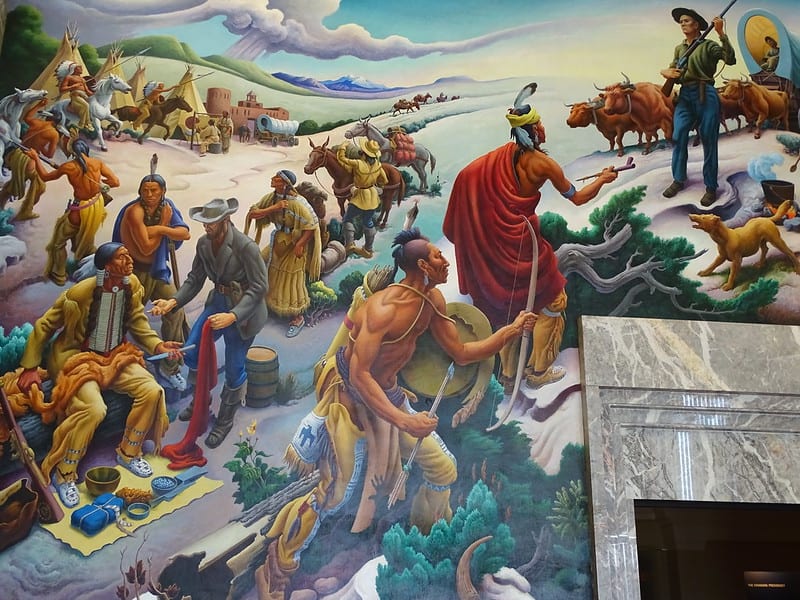
Independence and the Opening of the West offers visitors a taste of Benton’s work. The largest collection of Benton paintings can be enjoyed at the Nelson-Atkins, Kansas City’s premier art museum.
Know Before You Go at the Harry S. Truman national parks in Missouri:
- Think through your tour: Again, Harry S. Truman NHS is made up of two separate units. The largest of those units has numerous sites spread over several city blocks of historic Independence. You’ll want to pinpoint what you want to see and when before heading to this multi-unit historic park. This map is a great place to start.
- Charge your cell phones! Harry S. Truman NHS offers several cell phone audio tours. Make sure that your phones are fully charged so you can take advantage of the audio tour while also taking all your pictures and videos!
- Give yourself a day: Harry S. Truman NHS is spread across a handsome and historic part of western Missouri. That means that there’s no lack of points of interest and historic sites to see and enjoy. The city of Independence is a charming city, filled with iconic landmarks and historic lore. You won’t want to rush through this park.
- Look into tickets: The Truman Home requires ticketed entry, but does not sell tickets onsite. In other words, you won’t find a ticket booth at the Summer White House at 219 Delaware Street. You’ll have to get back into the car and drive a few blocks east to the park visitor center. The visitor center is located at 223 North Main Street, Independence, MO.
- Arrive early: Only bonafide educational groups can reserve tour tickets for the Truman home. General tickets are sold first-come, first-served on the day of admission.
- Make the most of Kansas City, MO: The Kansas City region offers an incredible array of museums and historic sites. Check out our list of 51 Best Museums in Kansas City, MO.
#3 George Washington Carver National Monument
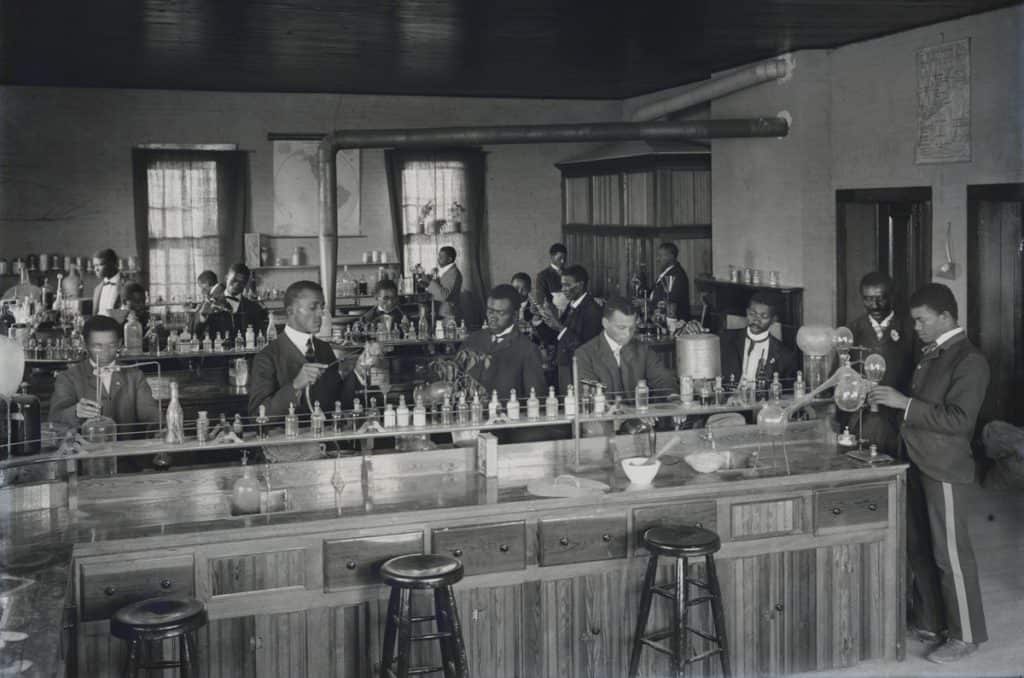
You don’t have to be in a big city to enjoy quality national parks in Missouri. Our third best national park site is located in southwest Missouri, about twenty minutes outside of Joplin.
George Washington Carver National Monument celebrates the life of the remarkable scientist and humanitarian. The National Monument features Carver’s birthplace and gives special emphasis to his scientific and educational achievements.
Planning your visit to the George Washington Carver NM
The 240 acre park is built upon the farm of Moses Carver, the adoptive father of George Washington Carver. An interpretive center gives context for Carver’s life, his times, and the determination he showed to bless others.
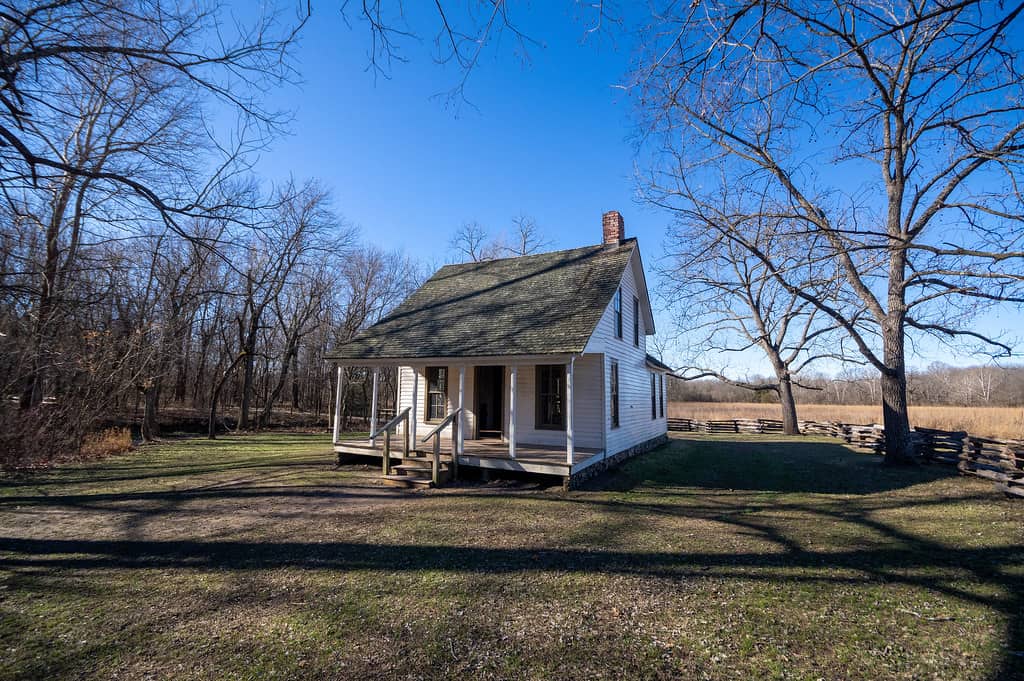
You can also follow Carver’s journey by getting outdoors. A short loop trail (3/4 mile) guides visitors past Carver’s birthplace, Moses Carver’s house, and the Carver Cemetery. The natural beauty of the trail is complemented with several bronze statues featuring Carver’s life as a boy and a man.
Put together, the visitor center and nature trail offer a good picture of Carver’s complex upbringing and the obstacles that he faced in 19th century America.
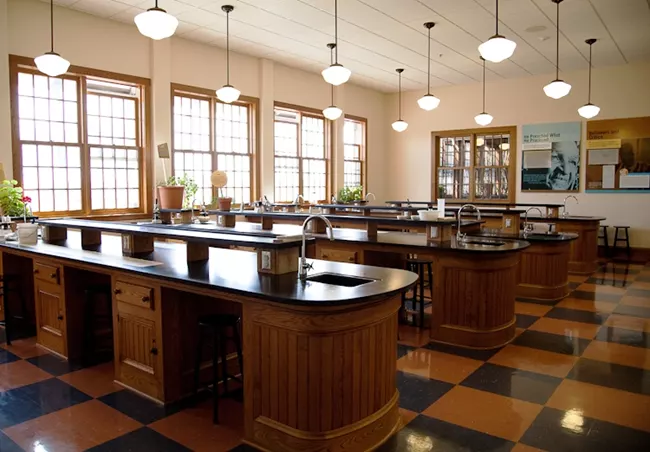
Perhaps the most impressive aspect of this park is its commitment to education. The visitor center features a working laboratory designed to resemble the famous Tuskegee Institute. Children can participate in Junior Ranger Days and various scientific programs in the lab and the park!
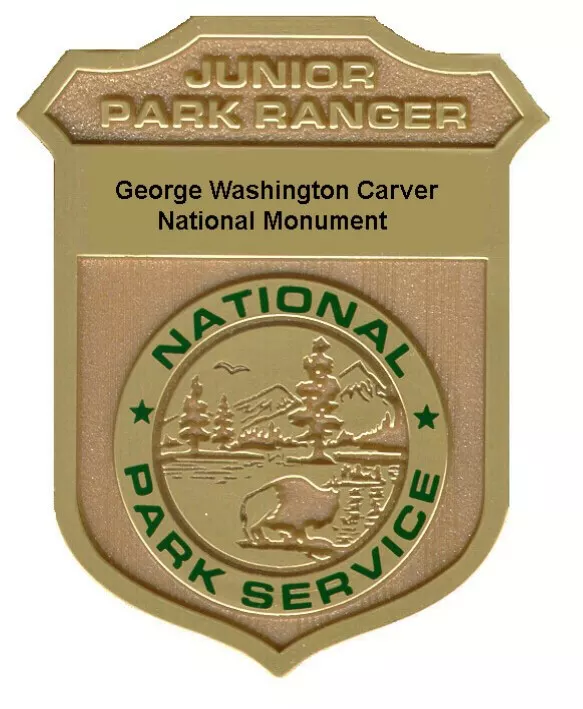
#4 Wilson’s Creek National Battlefield
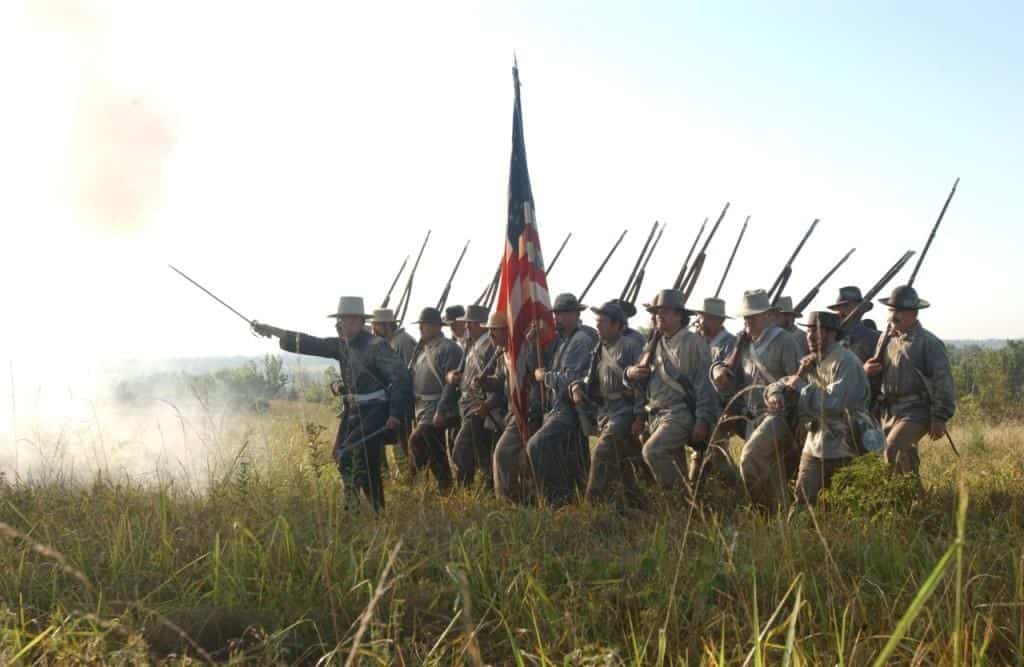
It’s not every day that you get to see an important battle site. Wilson’s Creek has a place among some of the national battlefields of the Civil War. Not only was it the first civil war battle fought west of the Mississippi, but its outcome hastened the eventual loss of Missouri to the Confederacy.
Civil War buffs also recognize this battle as the death site of Nathaniel Lyon, the first Union general slain in the American Civil War.
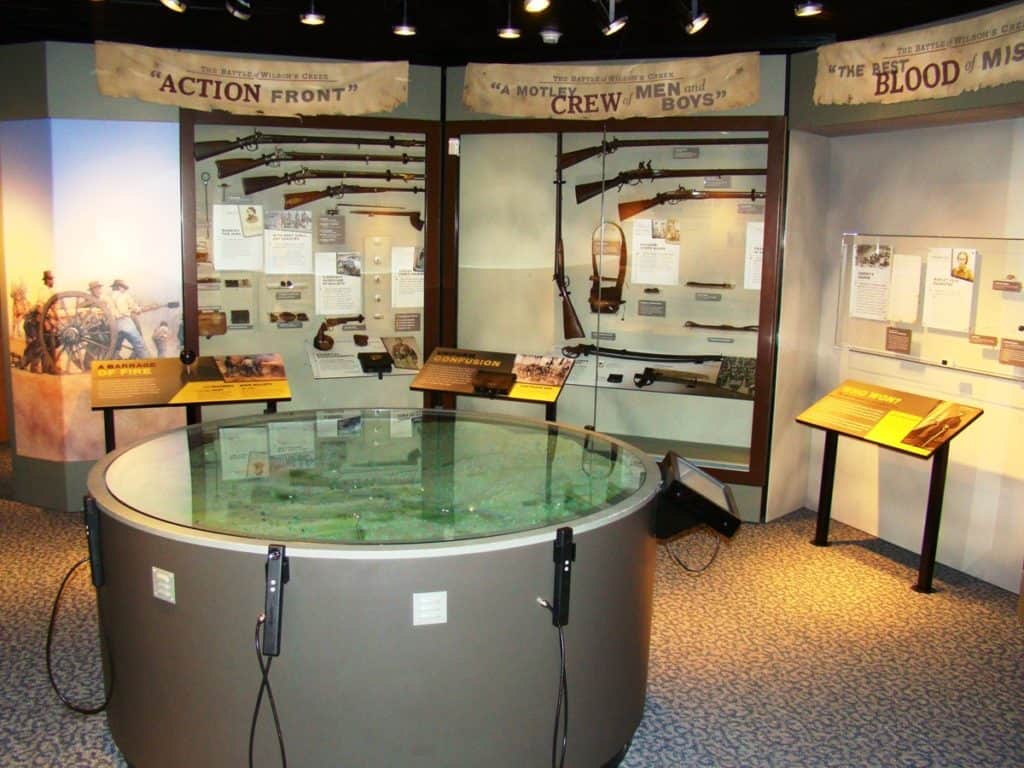
Perhaps the best way to experience Wilson’s Creek National Battlefield is to use the 4.9 mile paved road. The tour road offers you the chance to drive or bike through the battlefield and stop at important locations. Keep an eye out for the Ray House, an 1850’s farm house that served as a field hospital for the southern army.
In spite of its bloody history, Wilson’s Creek now provides a healthy setting for various Missouri wildlife. So be sure to bring your binoculars and enjoy the natural beauty the battlefield and the surrounding area. Wilson’s Creek National Battlefield can be found just outside the City of Springfield, in the Southewest corner of the state.
#5 Ozark National Scenic Riverways
The last of our top five is a one-of-a-kind NPS site in Missouri. Ozark National Scenic Riverways is a three-unit site providing access to one of America’s wildest landscapes.
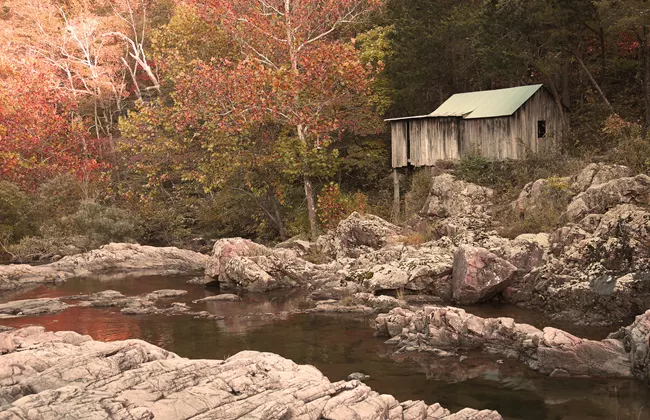
The Park is located in Missouri’s remote southeast, offering real adventures for the wild-at-heart.

What makes the region legendary can’t be seen from the surface. The Ozarks classic Karst topography is filled with sinkholes, caves, and springs. No less than 300 recorded caves have been found within the Park boundaries!
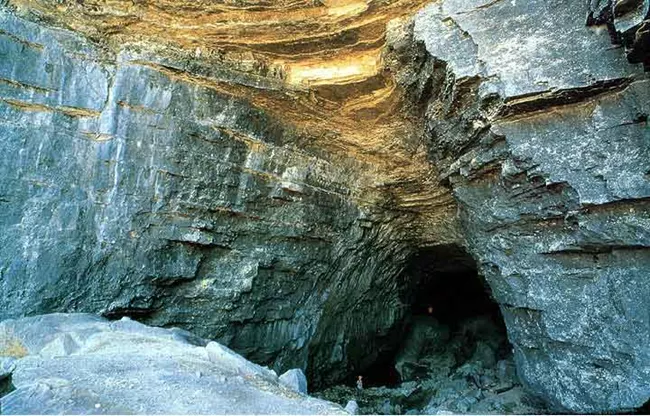
The Jack’s Fork and Current Rivers are noted for their cold, clear water. Over 60 percent of the water found in these rivers come from hundreds of freshwater springs. The largest of these, Big Spring, has an average daily output of 276 gallons of freshwater per day.
This rich region is a nature lover’s paradise, hosting 112 fish species, 197 bird species, 58 mammal species, and around a thousand plant species.
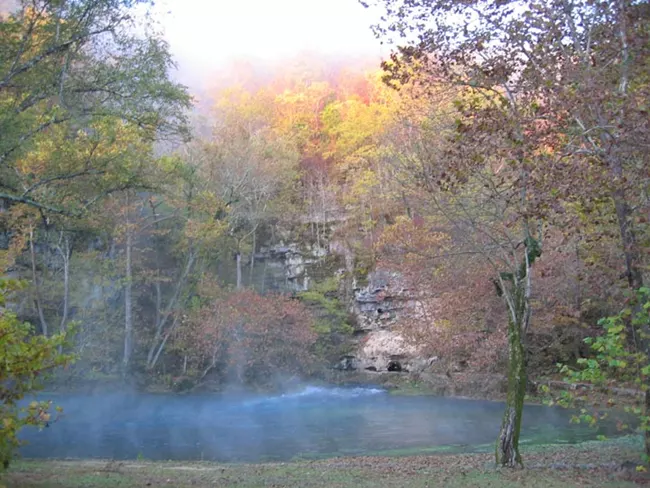
But this is not a “look, don’t touch” sort of place. Fishing, hunting, canoeing and other outdoor recreation is welcome and encouraged. What a place to take the kids and look for bandit’s treasure! It is truly a gem among the national parks in Missouri.

Runner Ups
#6 Ste. Genevieve National Historical Park
It was hard to keep this site out of the top five. In fact, it may get there with time. Ste. Genevieve NHS is the newest national park in Missouri, and doesn’t offer as much as some other national parks in Missouri. That said, this up-and-coming park has some pretty cool stuff and features a part of US history that’s often overlooked.

Ste. Genevieve was the first permanent European settlement in Missouri. The French settlement was established in 1750 by French Canadians who loved the rich farmland they named Le Grand Champ (the big field).
Remarkably, much of Ste. Genevieve was forgotten by time, allowing you to visit an actual French Colonial town.
What to See in Ste. Genevieve National Park (newest of the national parks in Missouri)
The Ste. Genevieve NHP Visitor Center provides a model of the colonial town and interpretive displays of the time and events that built and transformed Ste. Genevieve. This is the place to get the big picture, schedule tours, and get your questions answered.
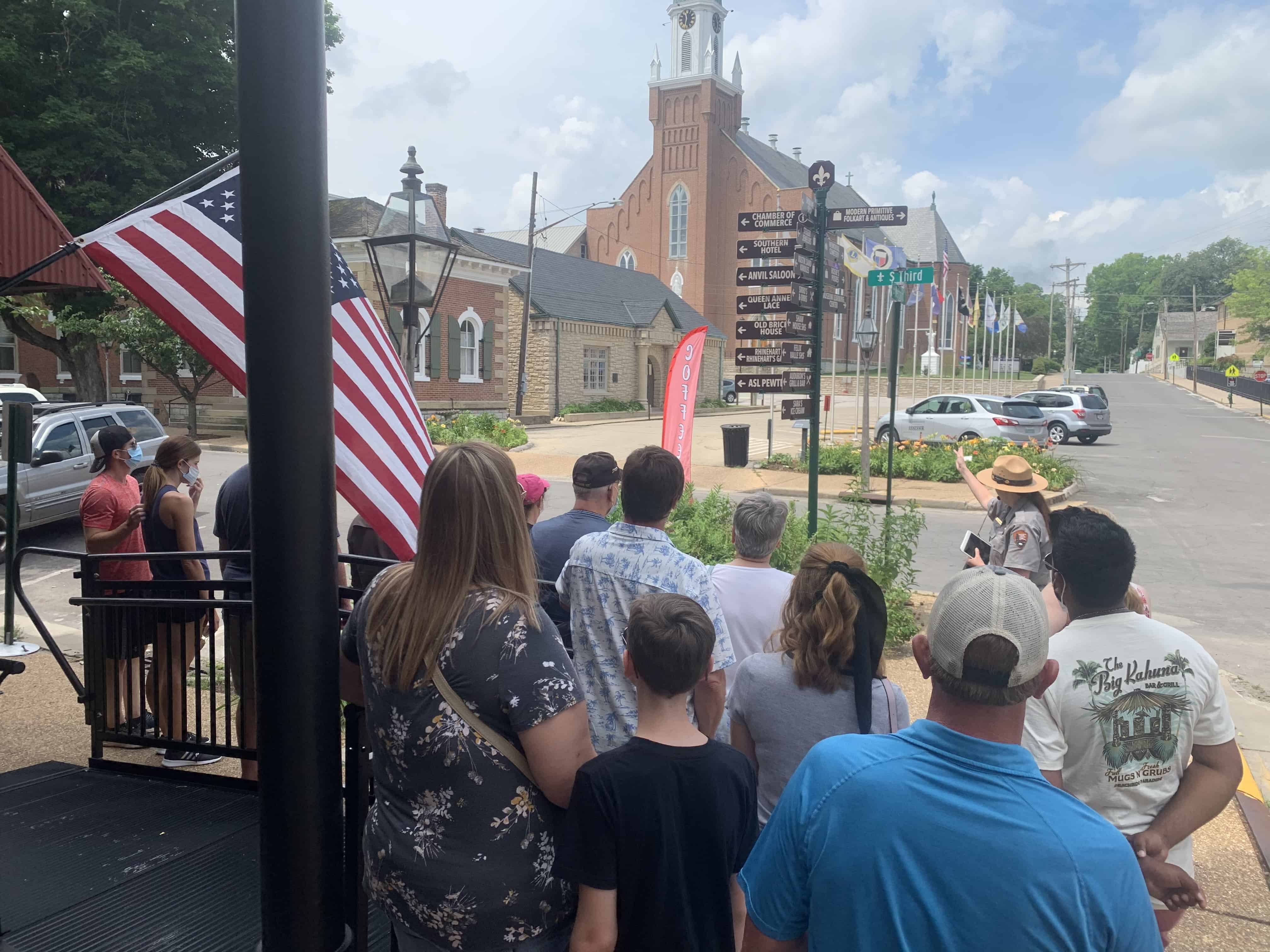
You’ll want to make time to the Amoureux House, a remarkably preserved French-Canadian home. The three-hundred-year-old house is a poteaux-en-terre (post in ground) buildings, a building typical in old French colonial settlements.
The rarity of this building underscores the importance of Ste. Genevieve. Only five poteaux-en-terre buildings remain in the United States and three of them are in Ste. Genevieve.
Other sites of interest
The Green Tree Tavern is the oldest structure still standing in Ste. Genevieve. The story of the Tavern mirrors the story of the town, transforming with time from home, to business, to Masonic Lodge.
The Jean-Baptiste Valle House has connections to Ste. Genevieve’s last Commandante, and boasts the first rose garden west of the Mississippi River.
The town’s Memorial Cemetery was built in 1787 and keeps the remains of somewhere between 3,000 to 5,000 persons. A place that’s so old, it doesn’t know how many people are buried the cemetery?! It’s almost irresistible to history buffs like me!
This National Historical Park puts an emphasis on living history experiences. Step into time and experience French Colonial life at this remarkable riverfront town. Ste. Genevieve is located on the Mississippi River and is only an hour southeast of St. Louis, Missouri.
#7 Ulysses S. Grant National Historic Site
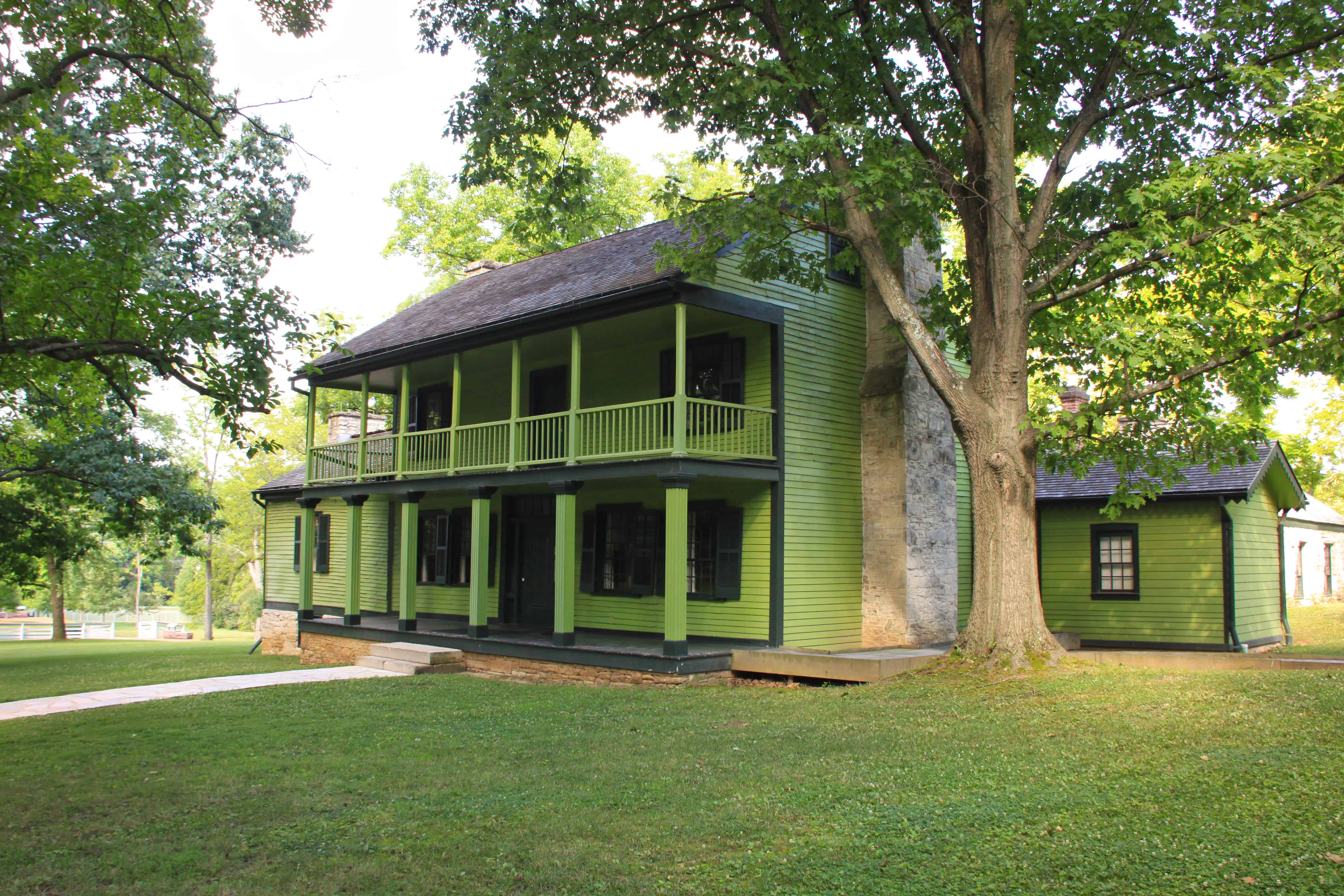
It’s easy to read history and forget that it involved real people. A visit to Ulysses S. Grant NHS brings the Civil War close to home. This St. Louis park site showcases White Haven, the home of Ulysses S. Grant and his Southern wife, Julia Dent.

The White Haven home was built around 1812 making it one of the oldest homes in St. Louis. The estate belonged to the Dent Family, a wealthy, slave-holding family who’s son befriended Grant during his years as a West Point Cadet.
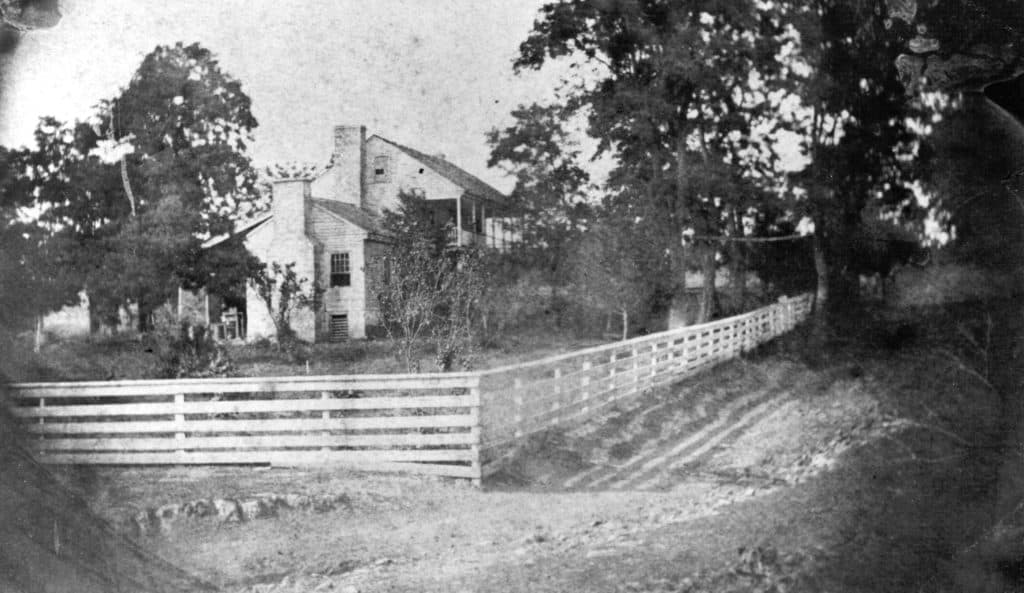
After West Point, Grant was stationed in St. Louis and was also invited to White Haven. Over the years, the home became the setting of Grant’s courtship and marriage to Julia, the growth of their young family, and their life during the outbreak of the Civil War. Grant purchased the estate from his father-in-law after the Civil War and made additions to the estate.
Ulysses S. Grant NHS is a great way to consider the Civil War era and what it meant for the various peoples who lived through it.
Another Way to Explore the National Parks in Missouri!
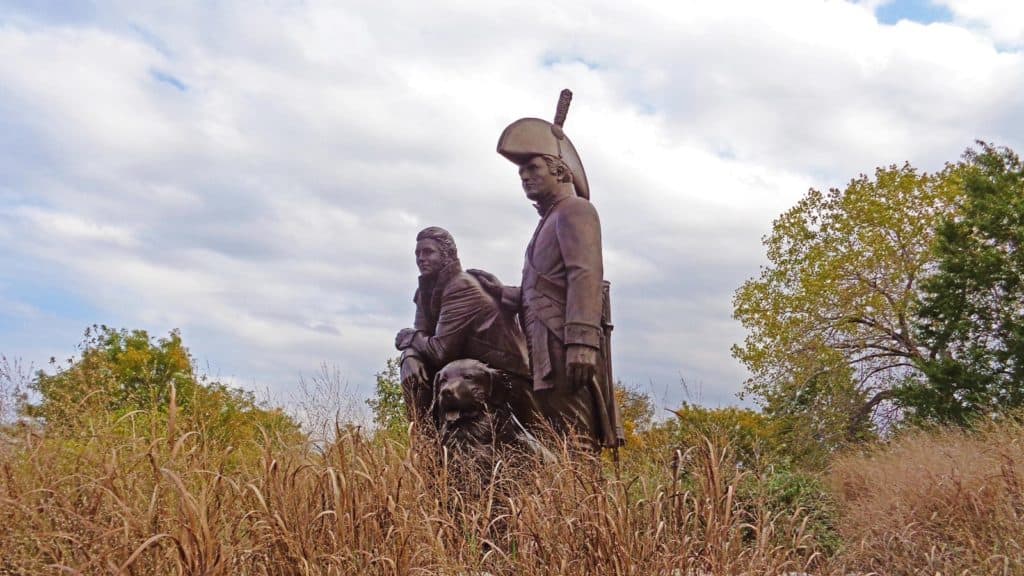
The last six attractions on this list aren’t actually sites but trails. The National Parks System manages several National Historic Trails that run throughout the United States. Thanks to NPS we can follow these historic Trails and visit not one site, but several!
Missouri held a central role in the exploration, conquest, and development of the American West. So it’s no surprise that nearly every Western history Trail begins or runs through Missouri.
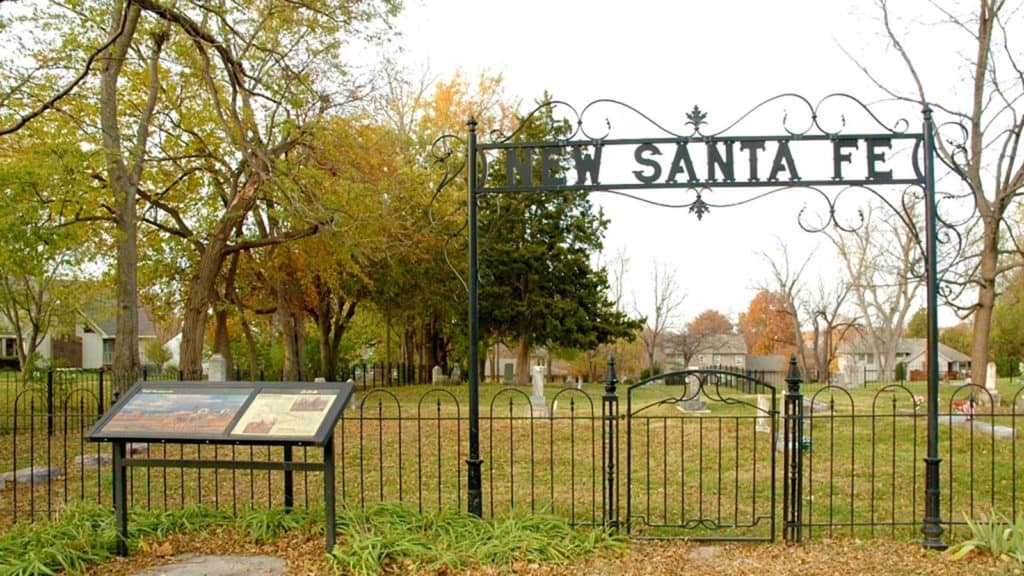
Not all of the Trails are equal in number of sites and experiences. Therefore, I’ve ranked these historic Trails according to what they offer in terms of travel options. That said, your own heritage and personal interest should likely be the determiner as to which Trail to choose.
Here’s our ranking of Historic Trails in Missouri, and our “Know Before You Go” tips:
#8 Lewis & Clark National Historic Trail
Missouri may be the top state when it comes to Lewis & Clark Historical Sites (Sorry, Oregon!). Meet up with the would-be explorers in southeast Missouri as they made their way to St. Louis to prepare for the expedition.
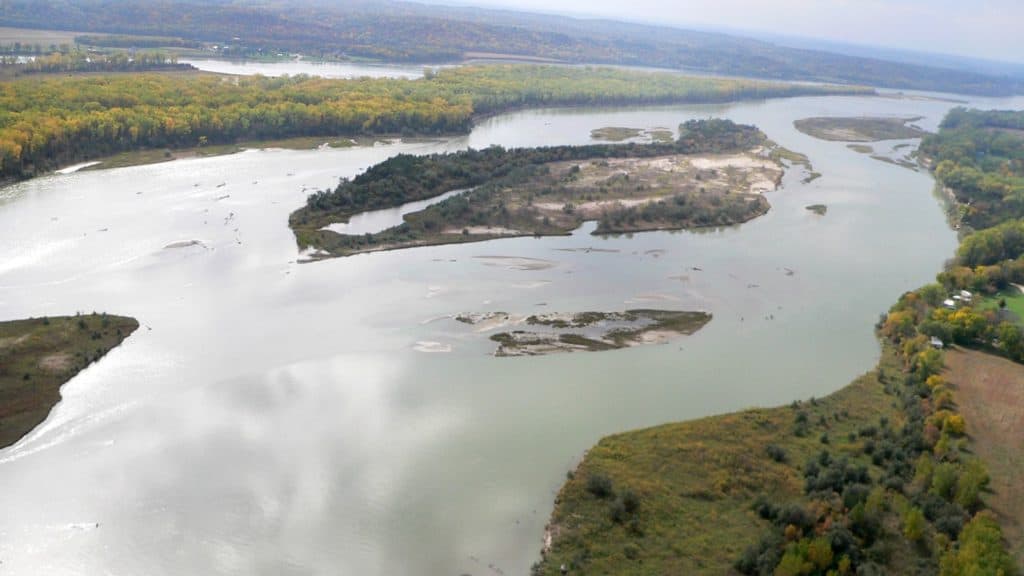
Chronicle their efforts to build the Corps of Discovery and prepare carry out the westward journey ordered by President Thomas Jefferson. Follow the Corps westward as they traveled up the Missouri River into the uncharted wilds of the Louisiana purchase.
You can even return home and see the final resting place of William Clark at Bellefontaine Cemetery in St. Louis. Missouri simply offers more Lewis & Clark than anywhere else.
#9 Santa Fe National Historic Trail
The first and most exotic of the Overland Trails begins in Booneville, Missouri. You can join enterprising souls on their quest to Santa Fe, New Mexico by following the trail from central Missouri to the Kansas border and beyond. The Trail runs through Independence and Kansas City, offering a host of trail ruts, interpretive centers, and historic sites.

#10 California National Historic Trail
Go west on the Emigrant Trail to California. You can start on the Trail in the cities of Independence or St. Joseph. The Independence segment of the trail runs for several miles of Metro Kansas City before crossing into Kansas. The St. Joseph segment is much shorter, consisting of a few sites in St. Joseph before crossing the state border into Kansas.
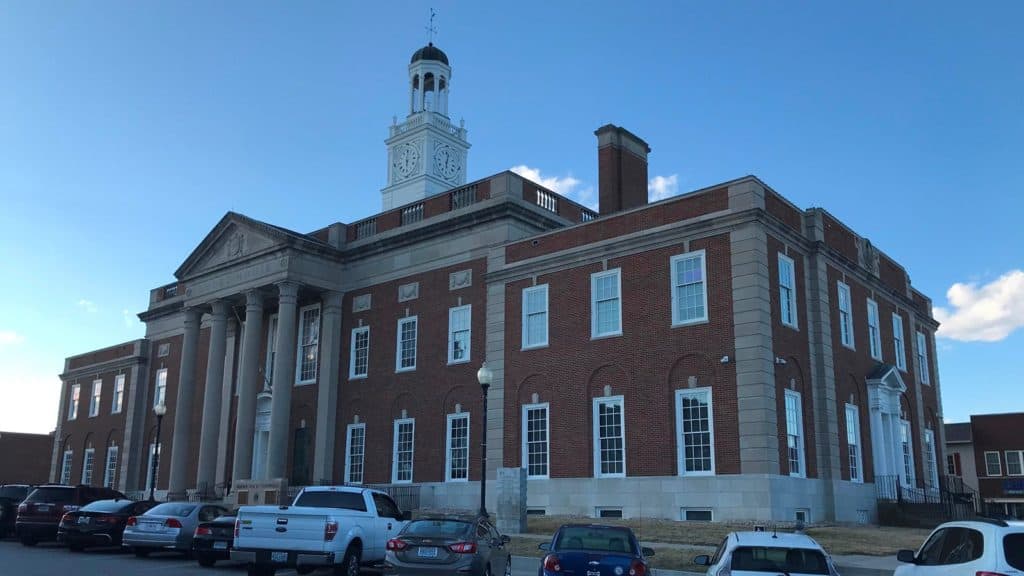
#11 Oregon National Historic Trail
The most famous of the Overland Trails begins in Independence, Missouri and largely follows the California and Santa Fe Trails into Kansas. Read about our Oregon Trail experience here.
#12 Trail of Tears National Historic Trail
You can follow the forced migration of the Five Civilized Tribes as the Trail moves through southern and central Missouri. The Trail has three different branches and largely runs through beautiful, forested sections of Missouri. As such, they offer historic sites as you explore the Ozarks and towns such as Alley Mill and Van Buren.
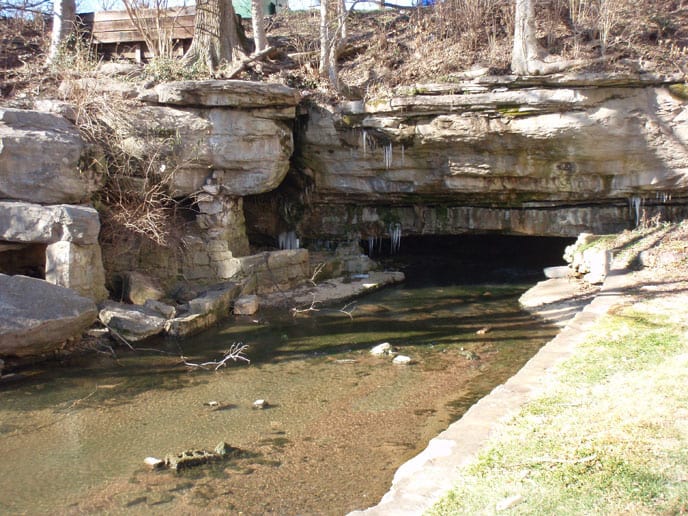
#13 Pony Express National Historic Trail
Saddle up for an incredible ride to San Francisco on the Pony Express National Historic Trail! The Trail begins in the City of St. Joseph Missouri, site of the Pony Express headquarters and the National Pony Express Museum. Read about our Pony Express experience here.
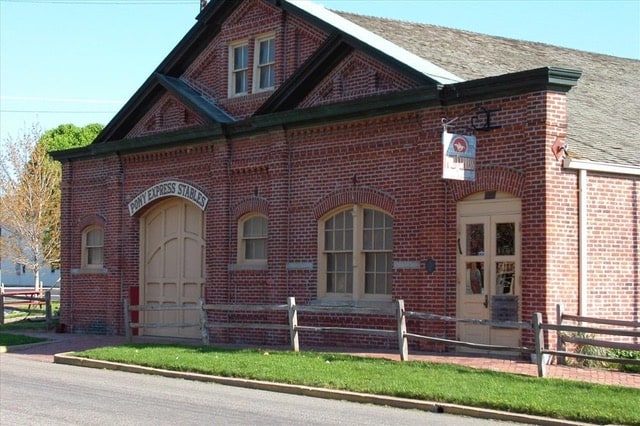
Know Before You Go on your Historic Trail
- Look Over the Route: The name may be singular (trail), but the reality may be plural. Some of the Trails had more than one starting point and various side routes and offshoots. Check out and bookmark the Trail webpage to make sure that you know where you’re headed.
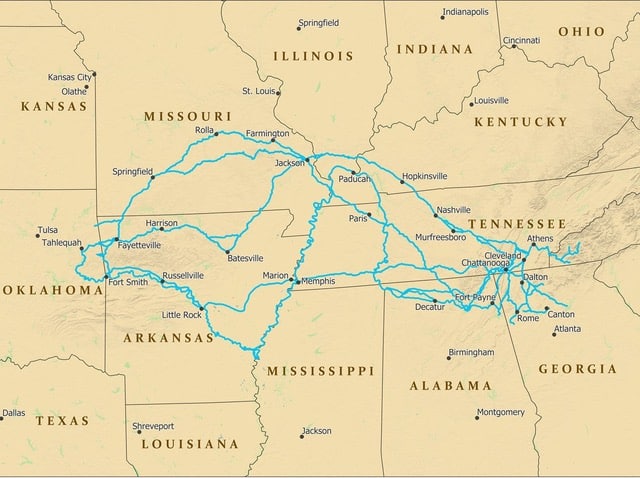
- Hit Two Trails at Once: Even pioneers didn’t want to reinvent the wheel. So it’s not surprising to find sections where historic trails converged or ran close together. Compare trail maps to find sites where trails share the same rut sections, interpretive centers, and historic sites.
- Get the App: The National Park service now offers an NPS Mobile app that can aid your historic cross country trek.

- Go (North)west: Five of these six trails run through Northwest Missouri. If you’re itching to drive some US history, then Northwest Missouri is a must. In fact you can visit a section where four of these trails converge at the National Frontier Trails Museum. Read about the National Frontier Trails Museum and related sites in our post on the 51 Best Museums in Kansas City.
- Make Your Own Trail: You should also know that these self-guided auto tours are totally up to you. There’s no rulebook. You can drive the entire length of trail or simply stop at one or two sites close to your hotel. You’re in charge.
Gateway to Great Memories
Missouri is rich in worthwhile family fun, and these 13 national parks in Missouri are among the best in the country! Make a plan to get here with your family and let us know how it goes! We’d love to hear about your favorite moments, see your photos, or get new information on what’s worth seeing in the Show Me State. Happy Traveling!
© Copyright Brian A. Warren 2022

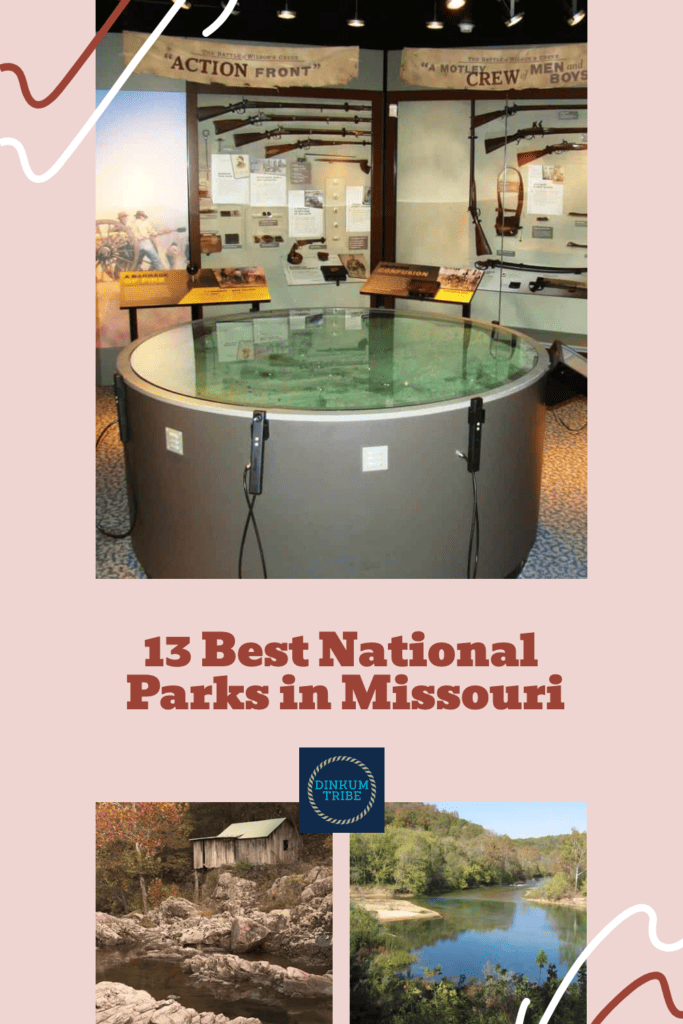
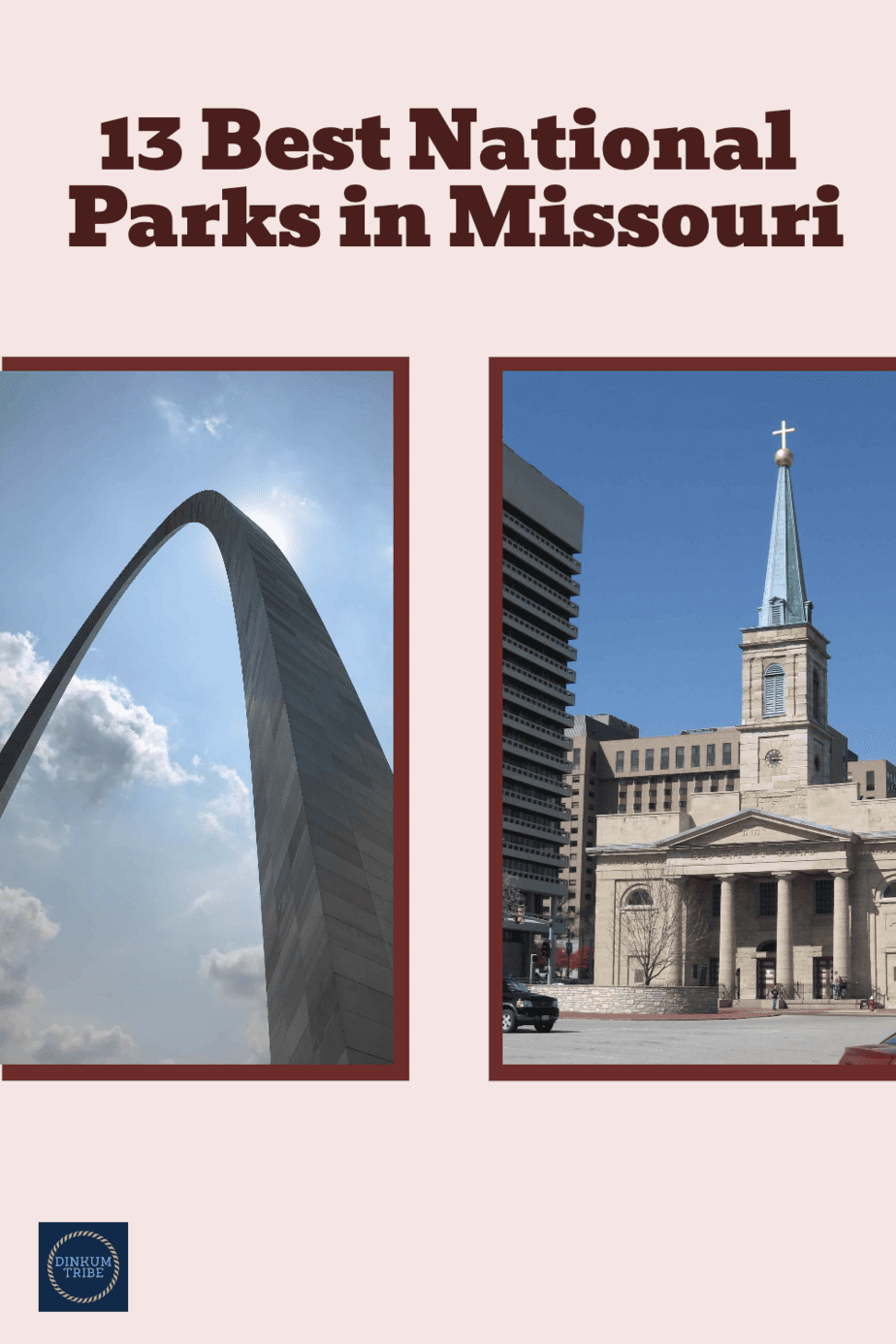
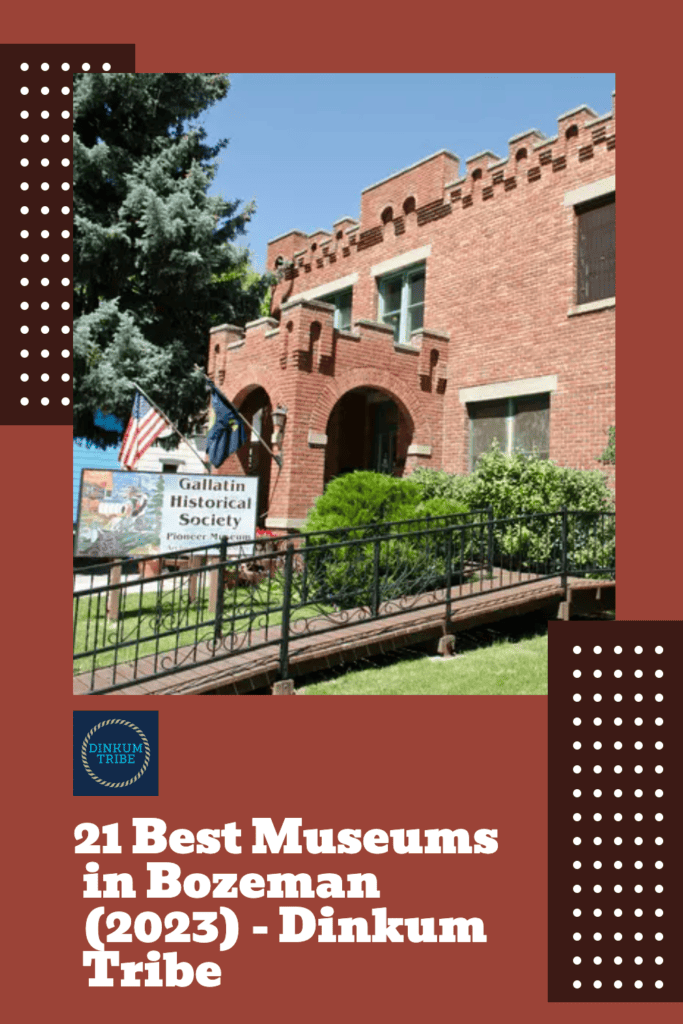

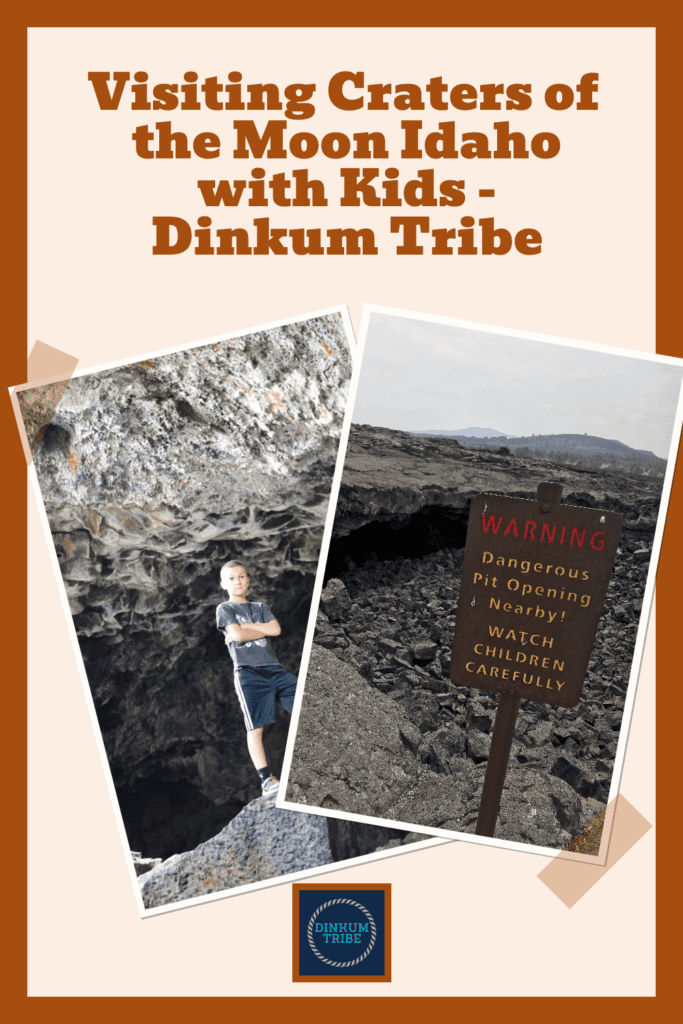
I went to Gateway Arch National Park last year and it was incredible! All of St. Louis was seriously so cool to see. I definitely want to check out all of the historical trails you shared as well, they seem super interesting!
We wished we had more time to explore the historic trails in Missouri too!
I have never been to Missouri besides an airport layover but you make me want to go! I would definitely visit the Truman site and all the trails. Great tips!
Thanks for stopping by!
Wow, there is so much history in Missouri that I didn’t even know about! I’ve always wanted to go on a steamboat tour, so I think that would be at the top of my to-do list. Thanks for sharing! 🙂
I hope you get to do the steamboat tour – it was definitely worth it!
We have only really spent time at the National Parks on the west coast in the USA. We will have to plan a road trip to hit some of the great National Parks in Missouri. I was impressed with he variety of things to see and do. Definitely fun for the whole family.
Yes indeed – we did not realize Missouri had so many neat National Parks either!
We loved the Gateway Arch, we were there just a couple months ago! Also, that steamboat tour looks so fun. I am always in for a river cruise!
Yup, the Gateway Arch riverboat cruise gave some amazing photo ops!
Wonderful detailed post with lots of ideas to keep the adults and kids happy!
Indeed. Missouri has lots of interest for all ages.
Sometimes you visit these sites just to say you’ve been there and then find that they are pretty amazing. The steamboat tour looks like a lot of fun.
Totally agree.
Wow, I actually had no idea how many national parks there were in Missouri! I’d love to visit Ulysses S. Grant National Historic Site.
That National historic site is on my list too.
I had no idea there were so many amazing looking national park sites in Missouri. It’s a state I haven’t yet visited but I look forward to the day I’ll be able to see some of these in person. The Ozarks National Scenic Riverways look beautiful – especially the interesting caves
Can’t wait to go back and see some of these too!
Missouri has so many unique places to visit! I had no idea there were so many national parks here before reading your post.
That surprised us as well!
I love visiting National Parks and historic sites, so I’m going to add Missouri to my bucket list. I’d especially love to visit the Gateway Arch and go on a steamboat.
DO it! So much fun!
The gateway arch looks so cool, I would love to see it one day 🙂
Words really don’t do the Gateway Arch justice- epic is the closest word I can think of.
I didn’t realize the Jr. Ranger Stations gave so much value to kids. Great tip!
We were consistently impressed with the Junior Ranger program at every NPS site we visited. I can’t recommend them enough!
Oooh very cool to see all these fabulous National Parks in Missouri. I reeeeally like the look of Ozark National Scenic Riverways. The wildness of that park looks beautiful!
The Ozark NP is the one I am most interested in seeing too! So pretty!
I’d love to see the Ozarks riverways!
Same here!
Missouri is such an underrated destination! You’ve got some great places featured h ere. I”ve only heard of the arch and not much else. Thanks for opening my eyes!
Most of these national parks in Missouri were new to me too!
I love this! I’ll be passing through Missouri on a road trip and I was going to skip stopping there, but there seems to be so much to do! I absolutely love the idea of exploring all the historic trails.
The historic trails are pretty high up on my must-see list too.
My grandfather always loved the arch! I need to get there!
Words and photos really don’t do it justice- the Gateway Arch is epic. I hope you get to see it soon!
I absolutely love the arch! Such a marvel. I love how much there is to do in that area. The boat tour and deck look stunning. I could do either for the whole day!
Absolutely! That area of St. Louis is definitely worth taking a day.
I love old historic buildings so no.2 & 3 would be on my list…but my favourite is no. 5 I love the nature and peace of how it looks. Ha ha and you give me so much more with the bonus parks…too many decisions
Right?! Totally agree.